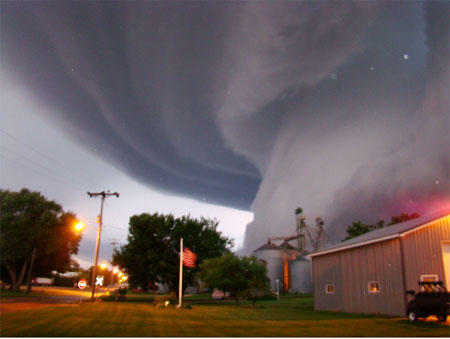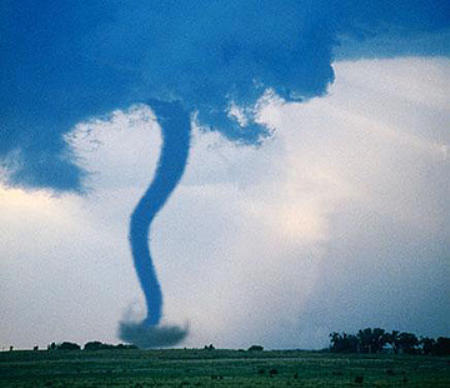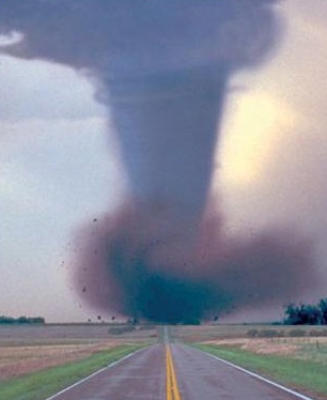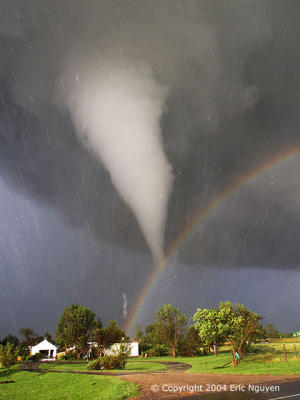

Tornadoes can have a wide range of colors, depending on the environment in which they form.Those which form in a dry environment can be nearly invisible, marked only by swirling debris at the base of the funnel. Condensation funnels which pick up little or no debris can be gray to white. While traveling over a body of water as a waterspout, they can turn very white or even blue.

The most extreme tornado in recorded history was the Tri-State Tornado, which roared through parts of Missouri, Illinois, and Indiana on March 18, 1925. It was likely an F5, though tornadoes were not ranked on any scale in that era. It holds records for longest path length (219 miles, 352 km), longest duration (about 3.5 hours), and fastest forward speed for a significant tornado (73 mph, 117 km/h) anywhere on Earth. In addition, it is the deadliest single tornado in United States history (695 dead).The tornado was also the second costliest tornado in history at the time, but in the years since has been surpassed by several others if population changes over time are not considered. When costs are normalized for wealth and inflation, it ranks third today. The deadliest tornado in world history was the Daultipur-Salturia Tornado in Bangladesh on April 26, 1989, which killed approximately 1300 people. Bangladesh has had at least 19 tornadoes in its history kill more than 100 people, almost half of the total in the rest of the world.


The most extensive tornado outbreak on record was the Super Outbreak, which affected a large area of the central United States and extreme southern Ontario in Canada on April 3 and 4, 1974. Not only did this outbreak feature 148 tornadoes in 18 hours, but many were violent; six were of F5 intensity, and twenty-four peaked at F4 strength. This outbreak had sixteen tornadoes on the ground at the same time during its peak. More than 300 people, possibly as many as 330, were killed by tornadoes during this outbreak




